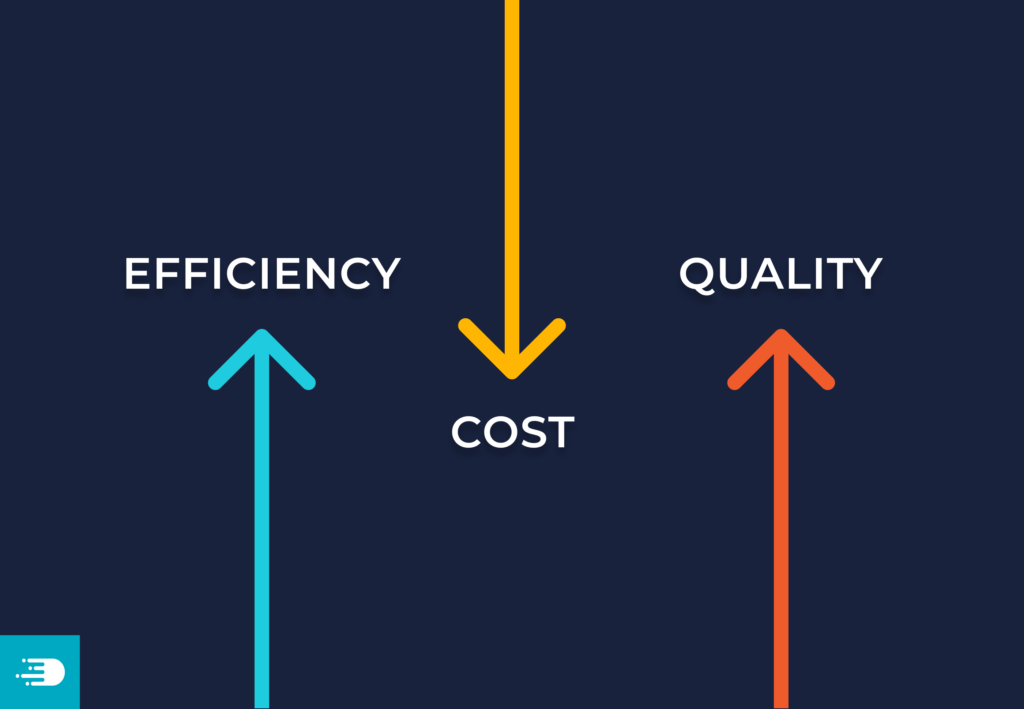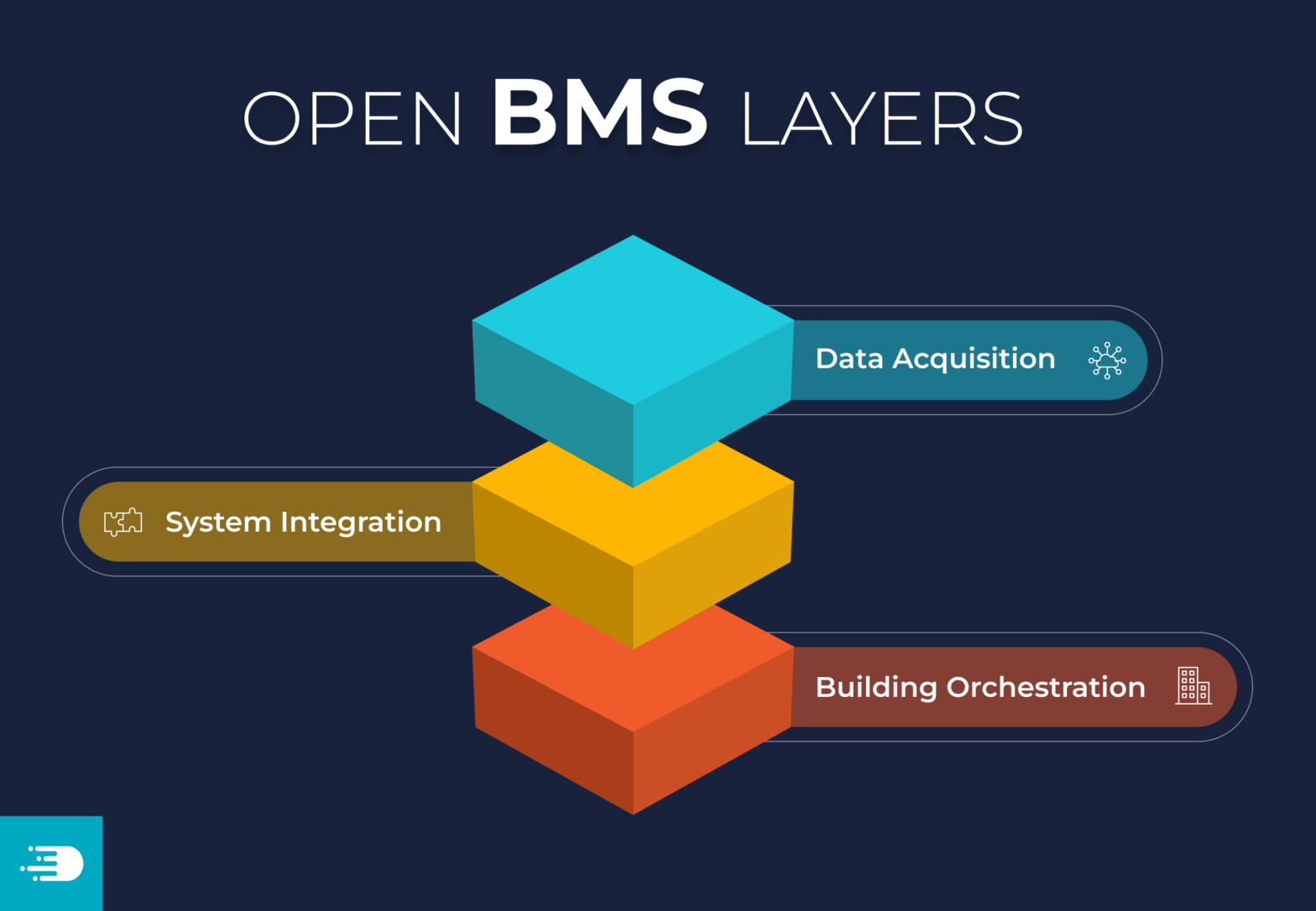The paradigm of Building Management Systems (BMS) has shifted dramatically from mere HVAC controllers to the nexus of smart building operations. Today, the emphasis on an “open” BMS underlines a pivotal change in the way we perceive building automation. Yet, what distinguishes an open BMS, and why is it becoming the cornerstone of modern infrastructures?
Understanding Open BMS
An “open” BMS is characterized by its interoperability, adaptability, and vendor-neutral approach. It’s a system that encourages integration across platforms and devices, encapsulated in three layers:
- Data Acquisition/Sharing: Here, the BMS communicates seamlessly with a plethora of sensors, actuators, and controllers, streamlining operations without incessant expert intervention.
- System Integration: Beyond data interaction, this layer ensures smooth integration of diverse subsystems, minimizing the overheads of time, effort, and specialized expertise.
- Building Orchestration: This is the zenith of an open BMS. It accommodates custom rules, workflows, and functionalities, catering to a building’s specific needs.

Benefits at a Glance
The value proposition of open BMS is manifold:
- Flexibility: Buildings can integrate emerging tech without the constraints of vendor lock-ins. For instance, a building initially designed with a particular brand of sensors can later incorporate another without substantial system overhauls.
- Cost-Effectiveness for End-Users: While the initial investment might be substantial, an open BMS, over time, results in significant savings. Reduced dependency on proprietary systems curtails the need for specialized hardware or costly upgrades. Moreover, end-users benefit from decreased energy bills due to optimized building operations1.
- Operational Efficiency: A university campus, for example, could leverage an open BMS to automate lighting and HVAC across different buildings based on occupancy and usage patterns, leading to energy conservation and reduced operational costs2.
- Tailored Solutions: An open BMS offers customization. Consider a hospital: ensuring that operation theaters maintain specific temperatures and air quality can be crucial. An open system can be tailored to address such niche requirements.
- Enhanced Predictive Analysis: Leveraging AI, Open BMS can facilitate precise predictions regarding energy demand. For instance, neural networks can create explainable prediction models for energy consumption, as seen in the works of Kim J-Y and Cho S-B.
- Efficient Fault Detection: Machine learning algorithms can preemptively detect and address faults. Research, like that by Li G, showcases the ability to diagnose HVAC system issues using convolutional neural networks.
- Optimized Energy Consumption: Open BMS enables data-driven energy decisions. Zhang W and Liu F’s work on AI-driven electricity feedback is a testament to this capability.

The Roadblocks
Transitioning to an open BMS isn’t without challenges:
- Ambiguity in Definitions: As identified by Schneider Electric’s research, a standardized definition for “open” remains elusive, leading to potential misinterpretations.
- Intricacy: Advanced functionalities might still necessitate developer expertise, potentially increasing operational costs in specific scenarios.
- Interoperability Issues: Even with open protocols, seamless integration isn’t always guaranteed. Different manufacturers have diverse interpretations of ‘open standards,’ leading to potential mismatches.
- Data Overload: The influx of data from myriad sources can overwhelm systems, necessitating robust data processing and storage solutions.
- Security Concerns: Open systems, by their nature, might be more vulnerable to cyberattacks, emphasizing the need for fortified cybersecurity measures.
Looking Ahead: The Imperative of Open BMS
With IoT booming and a surge towards sustainable infrastructures, the relevance of an open BMS is paramount. Buildings of the future won’t just be efficient; they will provide actionable insights for further optimization.
Imagine a corporate building analyzing employee movement and automating lighting, heating, or cooling, leading to substantial energy savings. As buildings strive for intelligence and eco-friendliness, integrating renewable energy sources, AI analytics, and responsive user interfaces will become standard, all facilitated by an open BMS.
In summation, open BMS isn’t merely a trend; it’s the bedrock on which future smart buildings will operate, ensuring adaptability, efficiency, and sustainability.
References:
Footnotes
- “The Business Case for Building Management Systems,” Buildings, 2020. ↩
- “Smart Campus: Leveraging BMS for Enhanced Operational Efficiency,” Harvard Business Review, 2019. ↩
- Schneider Electric – Buildings Research Center White Paper on Smart Buildings. ↩
- “Introduction to Open BMS,” Building Tech Review, 2019. ↩
- “Interoperability in BMS Systems,” Tech Journal, 2020. ↩
- Commercial Buildings Energy Consumption Survey. U.S. energy information administration.; 2012. ↩
- “Cybersecurity in Open BMS,” Security Today, 2021. ↩
- Kim J-Y, Cho S-B. Energy prediction models using deep learning algorithms. Sci Data 2019; 7:45. ↩
- Li G, Zhang D, Liu X. Fault diagnosis methods for HVAC systems using one-dimensional convolutional neural networks. Sci Data 2020;7:65. ↩
- Zhang W, Liu F, and team. Explainable AI models for electricity consumption feedback. Sci Data 2021;8:122. ↩
- Santos RN. Shapley additive explanations in fraud detection. Sci Data 2020;7:55. ↩
- Wang Z, Hong T. Reinforcement learning applications in building controls. Building Science Journal, 2021. ↩
- The Building Data Genome Project 2. Building Tech Datasets, 2020. ↩

